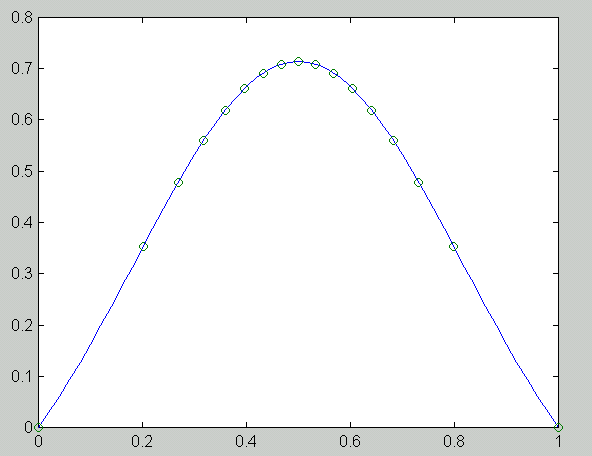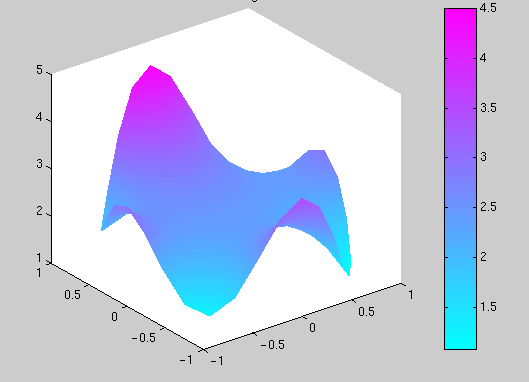
8.4.1999 Mikko Kokkonen, 33015p
x 0.1667 0.3333 0.5000 0.6667 0.8333 true sol. 0.1641 0.3101 0.4122 0.4328 0.3196 FEM sol. 0.1641 0.3101 0.4122 0.4328 0.3196 fd sol. 0.1613 0.3054 0.4063 0.4271 0.3156At the grid points the FEM produces much more accurate results in comparison to the finite difference solution when h is large, because the the stiffness matrix is exact and the load vector in computed to a high precision with the adaptive numerical integration method of matlab (quad8).
The following figure has been produced with the matlab-solution for the equation of the exercise 1. The solid curve is the exact solution and the circles represent the FEM solution at the grid points.

b. Convergence rate of FEM with trapetzoidal integration rule has been estimated using a matlab-script and data from [T-W] exercise 2.14. Results below indicate that the rate of convergence is O(h 2).
n h error rate
5.0000 0.2000 0.0054
10.0000 0.1000 0.0014 1.9987
20.0000 0.0500 0.0003 1.9997
50.0000 0.0200 0.0001 1.9999
100.0000 0.0100 0.0000 2.0000

This can be compared with the solutions obtained with Fourier series or direct integration of the Poisson kernel.
The table below shows how the error (with respect to the exact solution) at grid points behaves as the mesh is refined. Each refinement reduces the error by a factor approximately equal to three.
Max error
Original mesh 0.0106
1st refinement 0.0035
2nd refinement 0.0011
3rd refinement 3.3824e-04